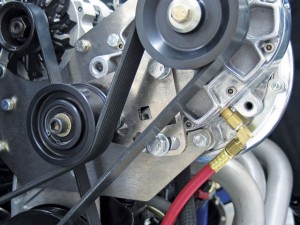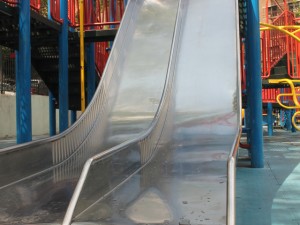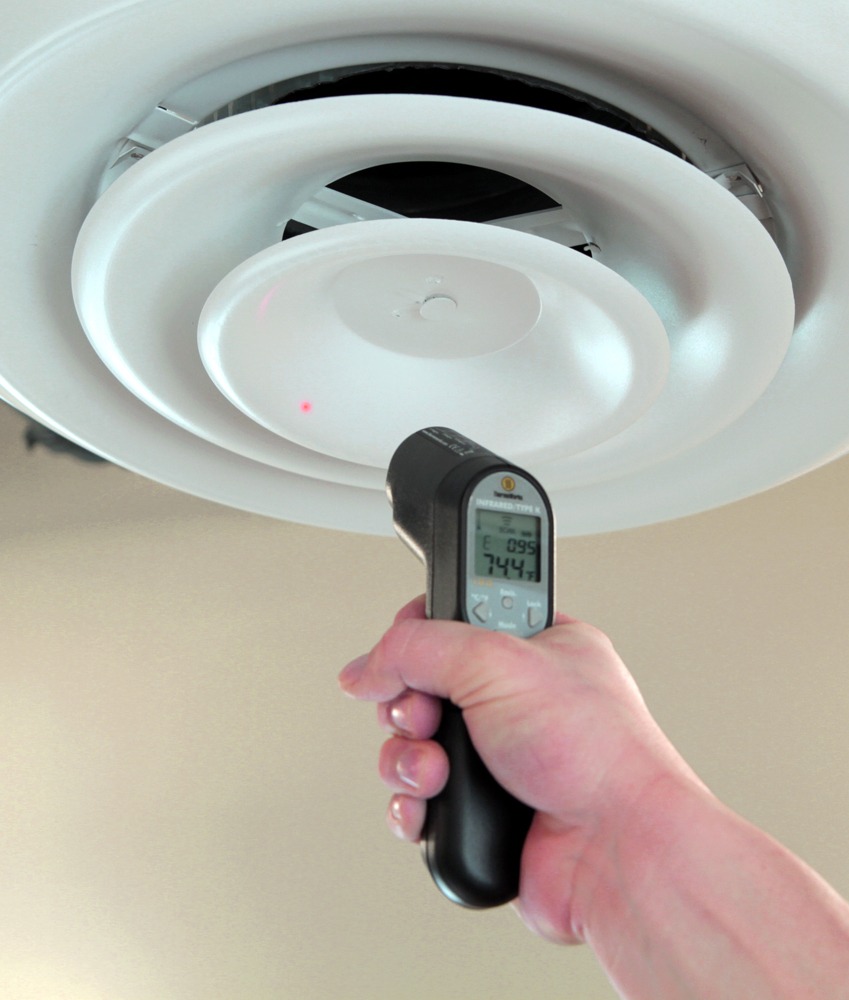Make Your Life Easier With an Infrared Thermometer
Infrared thermometers (IR) are effective tools in commercial kitchens and industrial applications. They are very fast (instantaneous), provide a good indication of temperature and allow users to collect data at a distance. As more and more professionals learn how to effectively use IR thermometers, many are finding that the benefits of IR technology extend far beyond the confines of the office, job site and restaurant kitchen. In fact, infrared thermometers can be invaluable tools to have in the home.
The first important stipulation is that all ThermoWorks thermometer products except for one are intended for food service, food processing, industrial, scientific and general home use. Our only FDA-cleared thermometer is the WAND™ No Touch Digital Forehead Thermometer. It is an infrared forehead thermometer that uses an algorithm to translate forehead temperatures to oral-temperature equivalents. For more information on using infrared thermometers for health screenings, read this other article with important considerations.
Here are a few ways infrared thermometers can make your life easier:
Infrared thermometers in the kitchen

While infrared thermometers are ideal for performing quick spot checks of hot and cold holding stations and buffet lines in restaurants, they are also helpful in a home kitchen. Soups, sauces and other liquids can be checked with an infrared thermometer. Simply pull a ladle full of liquid up from the bottom of the pot before taking a measurement. Doing so will allow you to closely approximate the temperature of the whole batch. Whether it’s a first time batch of soup, or leftovers that are being reheated, you need to be sure to bring the liquid up to 165°F for at least 15 seconds before it’s ready to eat.
IR thermometers are also perfect for measuring semi-solids like stuffing, corn or mashed potatoes, and ensuring that they’ve reached a temperature high enough to have sufficiently killed off any bacteria present. Insert a spoon into the center of the material, pull it back to create a void and immediately point your infrared thermometer into the void. A minimum temperature of 165°F should be reached before the food is considered ready to eat.
A quick point-and-shoot with an infrared thermometer will let you know when a skillet, pan, or pot has come to temperature (500°F), allowing you to create a perfect sear on steaks, roasts or chops. Infrared thermometers are ideal for recording fryer oil temperature (350°F), giving you the ability to perfectly gauge when your batter-dipped chicken is ready to fry.
Infrared thermometers for health
Many hospitals rely on infrared forehead thermometers for fast, accurate readings of patients’ temperatures. Why shouldn’t you? A good oral thermometer is great, but most thermometers you buy at the store aren’t actually good oral thermometers. A high-accuracy IR thermometer with a built-in forehead-to-oral-temp algorithm is a great way to check your family’s health. But that algorithm is important! Your forehead’s surface temp is cooler than your internal temp, so let the thermometer do the math for you.
Infrared thermometers around the house
Used properly, an infrared thermometer is the perfect tool for helping you shore up air leaks and address poorly insulated areas around the house. A simple way to determine if more insulation is needed is to compare the inside temperature of an exterior wall versus an interior wall in the same room using an infrared thermometer. If the difference is large, with several degrees between the two, the wall doesn’t have enough insulation and could most likely use a little more.
Also, an infrared thermometer can be used to detect air leaks. Air infiltration around doors, windows and other areas is a major energy waste. If cold areas or a cool draft exist near doors or windows, heat is being lost. An infrared thermometer can help you identify temperature differences and help you know which areas to investigate to determine the cause of the difference.
A strategically pointed IR thermometer can also quickly alert you to heating and cooling problems with your furnace/air conditioner. Locate the air intake, which can be located in the ceiling, base of the wall, or occasionally the floor. Compare the temperature of the air entering your air conditioner with the temperature of the air coming our of the vent (taking into account your thermostat setting) and you’ll have a good idea whether or not your unit is heating or cooling properly.
Infrared thermometers in the garage

One of the benefits of using an IR thermometer is the ability to take temperature readings at a distance. When you’re elbow-deep in a car engine and are having a hard time navigating belts, hoses and wires, an infrared thermometer might be just what you need. An invaluable diagnostic tool, an infrared thermometer is great for helping you pin down problems on a wide variety of vehicle systems, including cooling systems, HVAC, transmission, brake systems, bearings, cv joints, catalytic converters, engine misfires, tires and alignment, rear differential, under hood thermal mapping and intake air temperature regulation.
Infrared thermometers in the backyard
Finally, having an infrared thermometer lying around the house is a great way to protect you and your family in the backyard. Sure an IR thermometer is great for gauging the temperature of your grill grates right before you land a thick porterhouse, or filet mignon, but more than that, an infrared thermometer can help parents protect their children from serious burn injuries caused by hot surfaces on playground equipment.

The U.S. Consumer Product Safety Commission advises parents to check for hot surfaces prior to allowing their children play (or sit) on slides, swings, or steps. Decks, slides and steps in direct sunlight may reach temperatures high enough to cause serious contact-burn injuries in a matter of seconds. A quick read from an IR thermometer can alert you of surfaces that may be too hot for your young ones to play on.
When taking temperature readings on shiny metal surfaces take into account the possibility of inaccurate readings caused by the reflective surfaces low emissivity. A simple solution is to put a piece of masking tape over shinier surfaces and use the tape as your target for taking a correct reading.
As infrared thermometer technology becomes more advanced and affordable, there’s no excuse why every homeowner shouldn’t have one (or two) in his or her tool box. They are fast, accurate and adaptable to most home-user applications.
Read about popular myths and misconceptions surrounding infrared thermometers, here.


